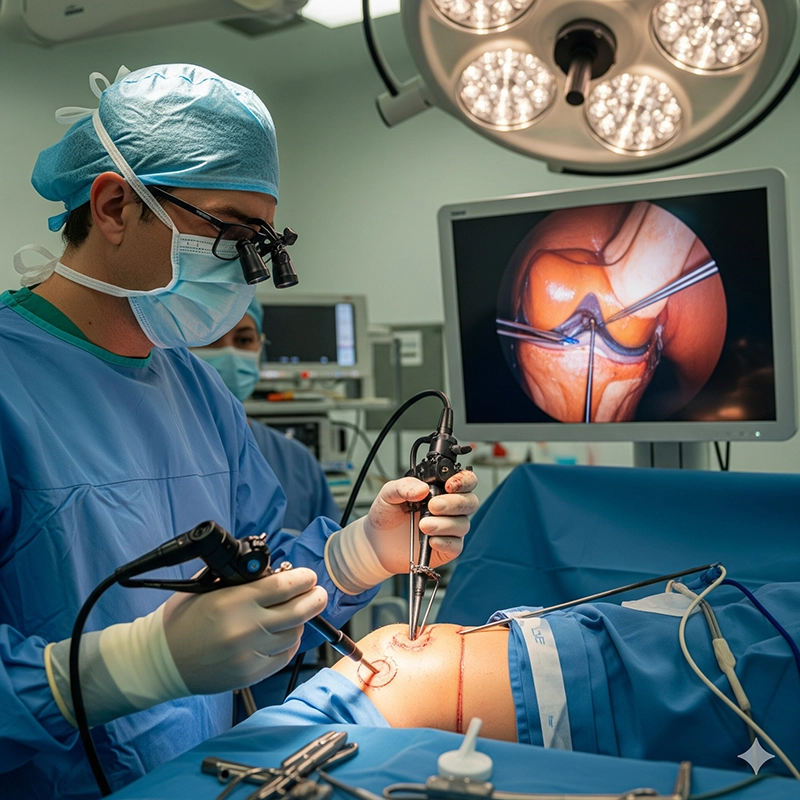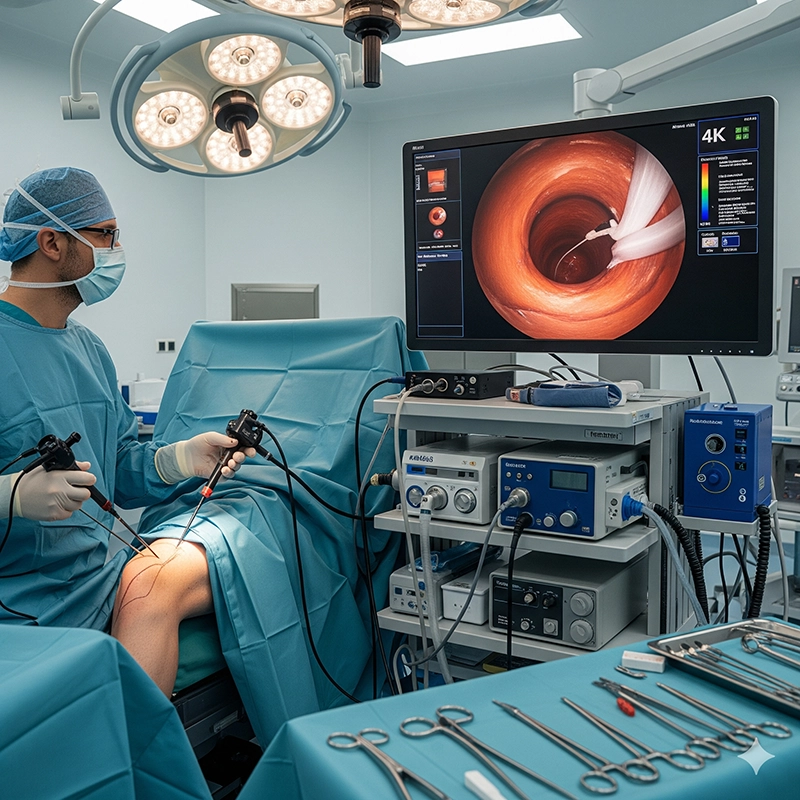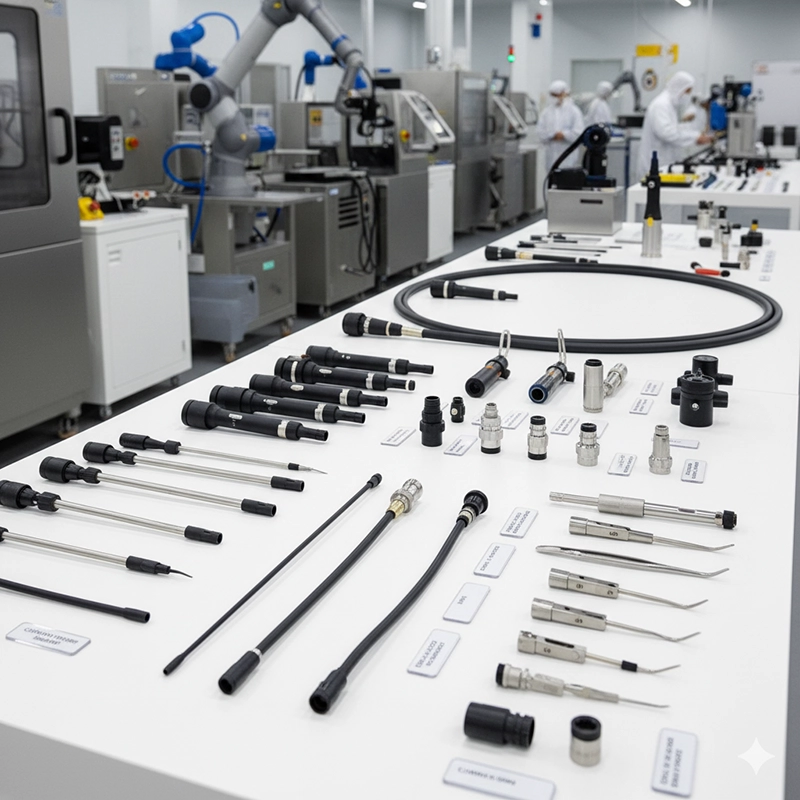Table of Contents
Years ago, orthopedic surgeons relied on scopes that were bulky, dim, and often unpredictable. Each device had its quirks—fogging lenses, uneven illumination, or awkward controls. Today, the story is different. The XBX arthroscope embodies a new era of orthopedic visualization where technology and design finally work together. In the hands of a modern surgeon, it feels less like a tool and more like an extension of vision itself.
In the early years of arthroscopy, every lens was polished by hand. No two scopes looked quite the same. Alignment errors, optical distortion, and light scattering were common, and surgeons often adjusted their techniques to accommodate imperfections. So yes, the craftsmanship was admirable, but it also limited consistency. The XBX arthroscope factory changed that model entirely. Inside its cleanrooms, robotic alignment stations position each optical module within microns, ensuring identical performance across every scope produced.
Imagine two workbenches side by side: one in 1998, where a technician fits lenses manually; another in 2025, where an automated system measures alignment, temperature, and torque simultaneously. The difference is not just precision—it’s predictability. When hospitals choose XBX arthroscopy equipment, they know each device behaves the same, procedure after procedure.
Optical coatings enhance color accuracy, allowing surgeons to differentiate cartilage from synovium clearly.
Distal tip lenses resist fogging even in long, humid procedures.
Light distribution is mapped digitally, eliminating dark corners or glare that used to obscure the field.
These improvements sound technical, but their purpose is simple: to help surgeons see more and guess less.
So what does all this mean inside the operating room? Surgeons often describe the XBX arthroscope as “balanced” and “responsive.” The control section sits naturally in the hand, while articulation moves smoothly without resistance. That comfort translates directly into precision. When the camera responds instantly, a surgeon’s focus stays on the anatomy, not the instrument.
Dr. Martinez, a sports medicine specialist, once compared it to driving a car with perfect steering. “You stop thinking about the wheel,” he said. “You just drive.” The same is true in knee or shoulder arthroscopy—when instruments follow intention without friction, the entire procedure flows more efficiently.
Sharper 4K imaging helps identify micro-tears or surface roughness invisible under older systems.
Improved depth perception reduces the risk of accidental tissue damage.
Shorter procedure times lower anesthesia exposure and postoperative pain.
In simple terms, clearer vision leads to gentler surgery and faster recovery.
The precision patients experience begins long before surgery. At the XBX factory, cameras and sensors record every assembly step. Optical fibers are tested for brightness uniformity, and each unit undergoes leak and torque verification. Quality engineers monitor production through digital dashboards rather than clipboards. It’s manufacturing as science, not art—and it shows in the end result.
Still, human expertise remains part of the process. Skilled inspectors examine final assemblies for microscopic imperfections that algorithms might miss. This blend of automation and craftsmanship gives the XBX arthroscope its signature reliability: a device that feels engineered yet personal.
Every unit carries a serial-linked calibration record stored in the XBX database.
Optical alignment data allow faster service and predictable maintenance intervals.
Hospitals can access performance history for audit or training purposes.
In other words, transparency builds trust—and that’s what modern healthcare depends on.
In an orthopedic clinic in Japan, surgeons used XBX arthroscopes for a series of complex ACL reconstructions. The result? A 25% reduction in average operating time and fewer mid-case scope replacements. Across Europe, teaching hospitals now record 4K arthroscopy footage with XBX systems to train residents on joint anatomy. These are small, practical shifts—but together, they redefine surgical efficiency.
For hospitals, reliability is currency. A scope that never fogs or flickers means fewer interruptions and smoother scheduling. For patients, it means smaller incisions, faster discharge, and lower infection risk. The XBX arthroscope quietly influences all of these outcomes through its design discipline.
Compatible with standard arthroscopy towers, processors, and light sources.
Plug-and-play setup shortens preparation between cases.
Full DICOM connectivity supports case recording and review.
By simplifying integration, XBX helps hospitals modernize without disruption.
Technology rarely stands still. XBX engineers are now exploring AI-guided scopes that can detect color shifts in cartilage to indicate early degeneration. Imagine real-time overlays showing tissue stress before visible damage appears. The possibilities extend beyond orthopedics into general minimally invasive surgery, where the same principles—clarity, comfort, and consistency—continue to drive innovation.
So yes, the XBX arthroscope represents more than an upgrade. It’s a reminder that progress in medicine isn’t just about sharper images or faster assembly—it’s about creating instruments that feel human, precise, and dependable. And perhaps the real question left for surgeons and hospitals alike is this: when your tools finally keep pace with your skill, how far can precision really go?
The XBX arthroscope is a medical imaging device used in minimally invasive joint surgeries such as knee, shoulder, and hip procedures. It allows surgeons to visualize the joint interior in real time, diagnose tissue injuries, and perform precise repairs with minimal trauma.
Older arthroscopes often suffered from uneven brightness, fogging, and limited depth perception. The XBX arthroscope uses 4K imaging, advanced optical coatings, and precision-balanced controls, providing surgeons with clearer visuals and smoother handling during procedures.
Each XBX arthroscope is produced in a cleanroom facility under ISO 13485 and ISO 14971 standards. Automated calibration, leak testing, and torque verification ensure consistent performance across every device, reducing downtime and maintenance costs for hospitals.
Yes. XBX arthroscopes are compatible with most arthroscopy towers, processors, and light sources used worldwide. Their plug-and-play design supports HDMI and DICOM integration for efficient video recording and image sharing.
Copyright © 2025.Geekvalue All rights reserved.Technical Support:TiaoQingCMS